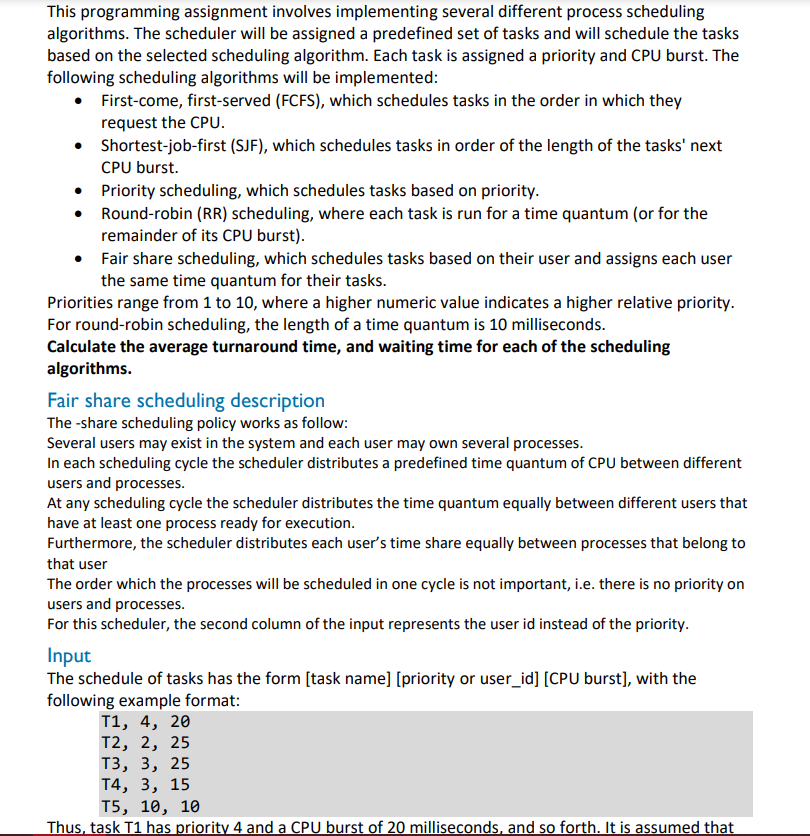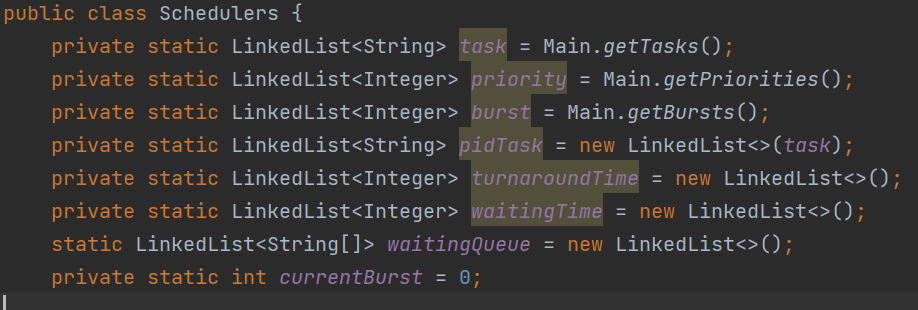Answered step by step
Verified Expert Solution
Question
1 Approved Answer
Please use Java and LinkedList , will upvote, please answer asap. Only shortest job first (SJF) and Fair share scheduling. Class scheduler is already made.
Please use Java and LinkedList, will upvote, please answer asap. Only shortest job first (SJF) and Fair share scheduling.
Class scheduler is already made. Main and class are seperate. Please help with the code using the following initialization.
public static boolean SJF() is already under class scheduler, but I want the code to write in it and the output same as shown in the example format.


Step by Step Solution
There are 3 Steps involved in it
Step: 1

Get Instant Access to Expert-Tailored Solutions
See step-by-step solutions with expert insights and AI powered tools for academic success
Step: 2

Step: 3

Ace Your Homework with AI
Get the answers you need in no time with our AI-driven, step-by-step assistance
Get Started


